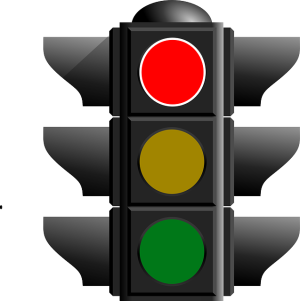Organic Search Engine Optimization (SEO) is a strategic approach to boost website visibility and attract organic traffic from search engines like Google, Bing, or Yahoo by understanding and aligning with algorithms that rank websites. Key components include keyword research, on-page optimization (e.g., content, meta tags), technical SEO for improved crawlability, off-page optimization through strategies like guest blogging, and focusing on user experience (UX). A positive UX encourages exploration and conversion, driving organic traffic over time. Measuring performance using metrics like impressions, CTR, average position, and conversion rates is crucial for optimization. Staying informed about Google algorithm updates ensures SEO tactics remain competitive. Ultimately, a holistic approach with quality content, consistent updates, strong authority, and exceptional UX cultivates lasting user relationships, achieving long-term organic traffic success.
In today’s digital landscape, Organic Search Engine Optimization (SEO) is a cornerstone of online success. This article guides you through the intricate world of organic SEO, focusing on how to attract and retain genuine traffic from search engines. We’ll explore key distinctions between organic traffic and paid advertising, delve into influential ranking factors, uncover powerful on-page and off-page techniques, and stress the importance of user experience in organic SEO. Additionally, we’ll provide strategies for measurement and adaptation to Google’s ever-changing algorithms, ensuring long-term success in driving organic traffic.
Understanding Organic Search Engine Optimization (SEO)

Organic Search Engine Optimization (SEO) is a strategic approach designed to enhance a website’s visibility and attract organic traffic from search engines like Google, Bing, or Yahoo. Unlike paid advertising, which displays ads at the top of search results, SEO focuses on understanding and aligning with the algorithms that these search giants use to rank websites. The goal is to earn top positions in search results by creating high-quality content, optimizing website structure, and building reputable backlinks from other relevant sites.
At its core, SEO involves several key components: keyword research, on-page optimization, technical SEO, and off-page optimization. Keyword research identifies the terms and phrases your target audience uses when searching for products or services related to your business. On-page optimization ensures that your website’s content, metadata, headings, and structure are optimized around these keywords. Technical SEO deals with improving a site’s crawlability and indexing, while off-page optimization focuses on building authority through strategies like guest blogging and social media engagement.
How Organic Traffic Differs from Paid Advertising

Organic traffic and paid advertising are two distinct ways to attract visitors to a website, each with its own unique characteristics and benefits. While both aim to increase online visibility, they operate under different principles. Organic traffic refers to the influx of visitors who reach a site through natural search results, primarily driven by search engine algorithms that prioritize relevant and valuable content. This method relies on building a strong online presence through keyword optimization, high-quality content creation, and link building, among other strategies.
In contrast, paid advertising involves directly purchasing ad space or impressions from search engines or other platforms. It allows businesses to appear in prominent positions, often at the top of search results, but it doesn’t guarantee long-term visibility without consistent investment. Paid ads can be an effective way to gain rapid exposure and target specific audiences, but they don’t build the same level of organic authority as earned traffic. The key difference lies in sustainability; organic traffic has the potential for ongoing growth and a wider reach over time.
Key Factors Influencing Organic Ranking

The landscape of organic search engine optimization (SEO) is dynamic, with several key factors constantly influencing how websites rank in search results. At the heart of this process is understanding that search engines, primarily Google, are sophisticated algorithms designed to provide users with the most relevant and valuable information. One of the primary drivers of organic ranking is high-quality, relevant content that consistently meets user intent. This involves thorough keyword research and strategic integration of keywords throughout a website’s content, including titles, headings, meta descriptions, and body text.
Additionally, external factors such as backlinks from reputable and authoritative sites play a crucial role in boosting a website’s organic ranking. The number and quality of these backlinks signal to search engines the popularity and trustworthiness of a site, influencing its visibility in search results. Other significant considerations include user experience (UX), page loading speed, mobile optimization, and overall website architecture. These elements collectively contribute to a website’s ability to attract and retain users, thereby enhancing its potential for higher organic rankings and increased organic traffic.
On-Page SEO Techniques for Boosting Visibility

Optimizing your website’s content and structure is a key component of On-Page SEO, which plays a pivotal role in enhancing visibility and driving organic traffic. This involves refining various elements to ensure search engines understand and rank your pages appropriately. One effective technique is keyword optimization, where strategic placement of relevant keywords throughout the text, headings, and meta tags aids in matching user queries. Additionally, creating high-quality, informative content that satisfies user intent can significantly boost your site’s performance.
Another crucial aspect is technical SEO, focusing on making your website accessible and crawlable for search engine bots. This includes optimizing HTML attributes, ensuring proper website loading speeds, implementing structured data markup, and creating a mobile-friendly design. By addressing these On-Page SEO techniques, you not only attract more organic traffic but also provide visitors with a seamless browsing experience, encouraging longer stays and lower bounce rates.
Off-Page SEO Strategies to Build Authority

Building authority through off-page SEO is a crucial aspect of driving organic traffic to your website. This involves a range of strategies focused on earning high-quality backlinks from reputable sources, which signal to search engines that your content is trustworthy and valuable. One effective method is guest blogging on established industry blogs or websites. By contributing well-researched, informative articles in relevant niches, you can attract a new audience and gain valuable backlinks to your site.
Another powerful off-page SEO strategy is social media engagement. Actively participating in relevant online communities, sharing insightful content, and engaging with influencers can increase brand visibility and drive organic traffic. Additionally, promoting your content through social media platforms helps to build a network of interested users who are more likely to share and link back to your site, thereby enhancing your authority and search rankings over time.
The Role of User Experience in Organic SEO

The user experience (UX) is a critical component of Organic Search Engine Optimization (SEO), playing a pivotal role in attracting and retaining organic traffic. When users find a website easy to navigate, visually appealing, and offering relevant content that meets their search intent, they are more likely to explore further and convert into customers or subscribers. Google, the leading search engine, has explicitly stated that UX is a ranking factor, emphasizing the importance of creating a seamless user journey from initial click to final interaction.
A well-designed UX encourages users to engage with the website, reducing bounce rates and increasing time spent on site. This behavior signals to search engines that the site provides valuable content, leading to improved rankings over time. Additionally, a positive UX fosters trust and brand loyalty, encouraging users to return and share their experiences with others, which can drive more organic traffic through word-of-mouth referrals.
Measuring and Analyzing Organic Traffic Performance

Measuring organic traffic performance is a critical aspect of understanding the effectiveness of your SEO strategies. By utilizing tools provided by search engines and analytics platforms, you can gain valuable insights into how your website is performing in the natural search results. Key metrics to track include impressions, click-through rates (CTR), average position, and conversion rates. Impressions represent the number of times your web pages are displayed in search results, while CTR shows the percentage of users who click on your links after seeing them in the organic rankings. Average position helps you understand how high or low your pages are appearing for specific keywords.
Analyzing these metrics allows marketers and SEO specialists to identify trends, pinpoint areas for improvement, and make data-driven decisions. For example, if you notice a significant drop in CTR, it could indicate that your meta titles or descriptions need optimization. Conversely, consistent improvements in average position suggest that your keyword strategies are bearing fruit. Regularly reviewing these performance indicators ensures that your SEO efforts remain aligned with your business goals, enabling you to stay ahead of the competition in the ever-evolving digital landscape.
Staying Updated with Google's Algorithm Changes

Google’s algorithm updates are a regular occurrence, reflecting its constant evolution to provide users with the best search results. Staying abreast of these changes is paramount for any SEO strategy focused on driving organic traffic. Each update often introduces subtle adjustments to ranking factors, such as emphasis on user experience, mobile-friendliness, or specific content signals. By closely monitoring these updates, marketers can adapt their strategies accordingly, ensuring their websites remain competitive and relevant in search results.
Regularly reviewing Google’s Webmaster Guidelines and keeping up with industry news allows professionals to anticipate algorithm shifts. This proactive approach enables them to make data-driven decisions that align with Google’s evolving expectations, ultimately enhancing the site’s performance and visibility for targeted keywords and audiences.
Best Practices for Long-Term Organic SEO Success

To achieve long-term success in Organic Search Engine Optimization (SEO), a strategic and holistic approach is essential. Focus on creating high-quality, relevant content that genuinely helps your target audience – this is the cornerstone of any robust SEO strategy. Consistently publish new material and update existing pages to keep search engines interested and reflect your site’s authority.
Additionally, prioritize user experience by ensuring your website is mobile-friendly, loads quickly, and offers a seamless navigation journey. Build quality backlinks from authoritative sources to signal to search engines that your content is valuable and trustworthy. Remember, organic traffic isn’t just about attracting visitors; it’s about cultivating lasting relationships with them through consistent value delivery.
